News
Interview: Jay Baruchel on Directing, Effects, and His Top Horror Movies
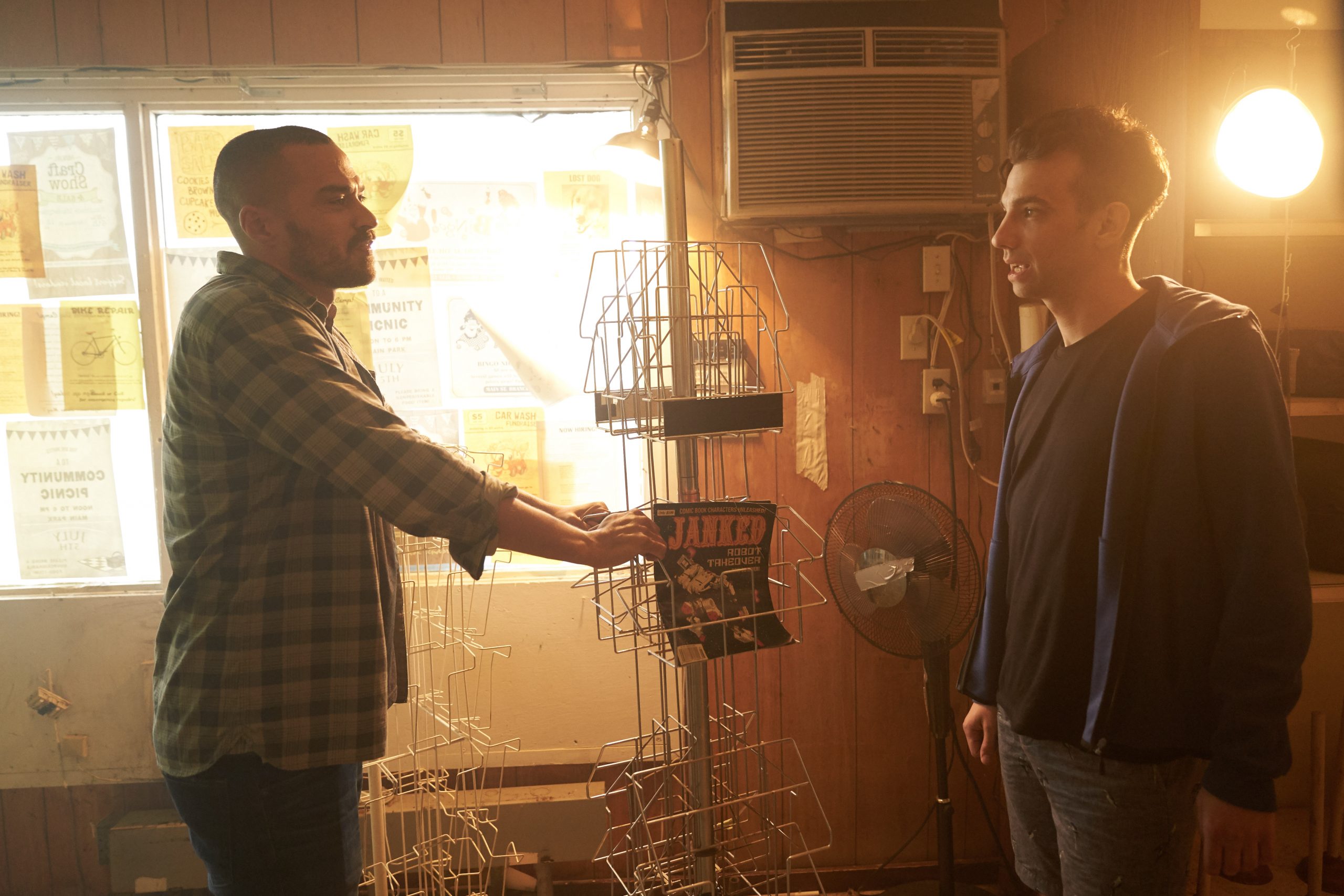
As the director of Random Acts of Violence, Jay Baruchel had a wealth of experience to draw from. Working in the industry from the age of 12, he’s learned from the likes of directors like David Cronenberg and Clint Eastwood, and gained valuable insight into what can make (or break) a film set.
I sat down with Jay to discuss his newest film, practical effects in the horror industry, and some of his favourite horror films.
For part one of our interview on Random Acts of Violence, click here.
Kelly McNeely: So, you’ve been in the industry for a long time starting with Popular Mechanics for Kids, but how has that helped you with everything you’ve experienced as a director and what have you learned through all those crazy experiences?
Jay Baruchel: Everything. And pretty much everything I know about movies is from being on set since I was a kid or watching movies. My first day on set, I was 12. And even when I started then, my mother said to me, well, you want to be a director. My interest in cinema wasn’t born of my interest in acting. It’s the other way around. I became an actor because it allowed me to be near cinema.
And so when I was 12, and my mom said to me, you know, you want to go to film school eventually, you’d have to wait till you’re 18. But you have an opportunity now to be in the best film school in the world, which is experience and just seeing it from the guts out. I was always a sponge. So from my first day onwards, I was always in love with, you know, the goddess of cinema, and I was absorbing everything I could, I would pick every brain that I could.
And what’s cool is looking back as a 12 year old/13 year old starting on these things, a lot of the crew, they were grownups in my mind back then. But looking back, they would have been way younger than I am now, 23-24, fresh out film school. So all their ideas and their interests were still fresh and diverse. And so at 12-13 I got to see how movies are made. But I got to be around a bunch of 20-somethings that just got out of film school who wanted to feed me all of the shit that they’d learned. And that’s a really awesome, inspirational place to start from.
But also, I’ll be honest, in 20 plus years of being on set, I think I’ve maybe been on half a dozen to ten that have functioned correctly. Like there is an industry standard of kind of controlled chaos, but it’s controlled in the loosest sense. But there’s also — and I’ll say this — that directing is… how should I put this? There are people that fail upwards. And because you’re the conductor, because your job is to have an instinct and opinion, and every other person on set ultimately comes to you, right?
What that means is, if you are someone who’s devoid of inspiration, it’s fucking easy to fake it, because everybody is constantly showing you options. I can’t tell you how many times as an actor I have been on a set where it was clear that the director had absolutely no instinct for what we were trying to do. And so these people would — every single time — assume that having the entire cast and crew in front of you as a sort of sandbox with with fucking GI Joes and vehicles in it, that somehow you would have to be inspired and have an instinct.
That seems to be the big takeaway, that a lot of them come in not knowing what the fucking thing is about and hope that we’re going to find it for them. And when you don’t know what you want, and all you’re going off of is what’s not working for you or what you don’t want, that’s when you get north of 7, 10, 12, 15 takes, and rare is the inspiration that survives that, I think.
And the best sets I’ve been on, by far, by far, by far, would be two masters that I’m really lucky to have to have worked for, was David Cronenberg and Clint Eastwood. Their sets were incredibly similar too, because it was a shared vision that was very clearly articulated. Now obviously you leave room to find and to explore, and no matter what the thing is, the thing on paper is not going to be the thing you make. But like, you still know what you’re trying to say, right? And so everybody on each set knew what the movie was trying to say. Everybody on each set enjoyed being there. Everybody on each set felt that their fingerprints were on the film. And so everybody operates from a place of passion, but also, there’s no stress and anxiety.
Because Eastwood’s thing is if I hired you, it’s because you can do the job. I hired you. So I don’t need to fucking worry. I don’t need to micromanage. Bring it — like the way everyone else is bringing it — and we’re all good, and we don’t have to do more than one rehearsal. And we don’t have to do more than three takes, and we can get home early. No one gets home early! But on both those movies, I got off set early, and they finished early! Million Dollar Baby finished like two days ahead of schedule, which is unheard of for a movie that size!
And so I was like, that’s the whole thing. Make sure everybody feels that this is theirs, that we’re all in this together. Nobody will ever be as at risk creatively as I am. But whatever the next best thing is, that’s what I want everybody to feel. I want them to feel that they can pitch any idea to me. Because — by the way — if everyone feels they can pitch in any idea to me, that means they’re really operating from a place of pure imagination, which for an artistic endeavor, like a film, can only be good for it. But also more to a point, I’ve seen a lot of examples — way more examples — of what a director shouldn’t do. And that is a strong kind of guiding thing too.
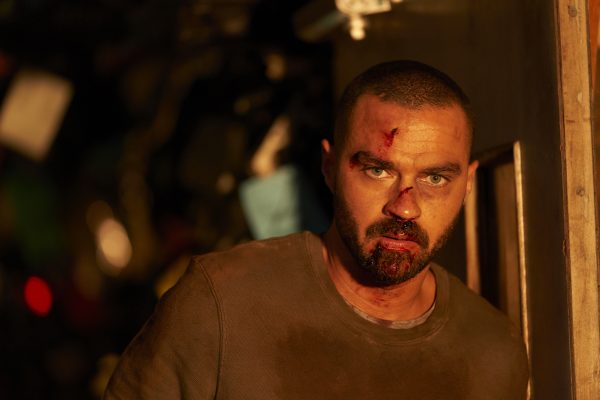
via Elevation Pictures
Kelly McNeely: With the really brutal violence in Random Acts of Violence, that’s a bit of a departure from what people expect from you. Horror is clearly a passion of yours, would you make another horror movie? How important was it for you to have practical effects? And how did you design those effects like the triptych, how did you get those concepts created?
Jay Baruchel: Yeah, that’s a great question. Um, yeah, absolutely in a heartbeat. I want to spend my life making horror movies or action movies. And what I realized is I want to spend my life making war movies, because war movies are both of those, and then some… pretty much every fucking genre. And the older I get, the more I’m unable to see truth in any movie that isn’t a war movie. But yes, I would. I would definitely in a heartbeat.
There’s a videotape somewhere at my mom’s house of me at age 7 — I said I wanted to be a director at 9 — but when I was 7 there’s a videotape of me saying to my mom, to the camera, I’m going to write stories so scary that they scare Stephen King out of his underpants. And so, I’ve enjoyed that shit since I was little, and I come by it honestly from two legit movie fans.
My mother and father would constantly give me a Film 101, and and with every flick, we’d watch — and especially if we watch something that was important — my mother explained to me why Hitchcock is the master of suspense and what that means and the type of movies he made, which drove me into an absolute obsession with the man when I was a teenager. So I love this stuff. And I’ve tried to figure out why.
I think it’s the same reason that I like punk, industrial, and metal, which is because it’s direct, and it bypasses a lot of shit that I find to be little more than wallpaper. It’s direct, it’s truthful, it’s strong medicine, and its fan base is religious and it gets no love from the intelligentsia. So this is the shit I should be watching, this is the shit I want to make.
In terms of how important the prosthetic stuff was: of paramount importance. For me it’s [Roberto] Bava’s work and John Carpenter’s The Thing. That’s the pinnacle, and everything else is an answer to that, an effort to recreate it, it’s a springboard from that. The crutch of computer generated imagery is — like any crutch — it’s a fucking crippling one, ultimately, that we’re overly reliant on.
But there’s obviously a place for it; there is computer generated imagery in Random Acts of Violence, in addition to just the obvious stuff like the animation, but there’s stuff we did to, you know, add a bit of rain here and there, and to add in a blade here. There is a home for it, but to make it the entirety of your special effects design, that’s sacrificing too much control of the aesthetic for me. By the way, I also can’t name a movie with CGI that I love, right? But I can name a bunch of prosthetic bits that I think are masterpieces. Se7en, there’s nothing like that shit, that stuff is true artistry.
One of the cool things about being in the same business since I was a kid is that you get to make relationships and you get to learn and you get to sort of go and ask people that you worked with when you were a kid who, like, remember you as the nerdy kid that asked too many questions. So the team that did all of the prosthetic effects, all of our gore, was Paul Jones. Jones also did a bunch of stuff in Goon: Last of the Enforcers, including the fist that breaks on his face and he loses a bunch of teeth, so his broken pallet, that’s all shit that Paul did.
If you google Paul Jones, you’ll see Resident Evil and everything, everything. And I worked with the guy when I was like 18-19, and we got along super well. We just shared nerdy interests — Fangoria kids, right — of course, I was an actual kid, he was in his 20s. So when I get time to make my horror movie, however many fucking years — a decade plus — later and I get to say, hey, Paul, can you come up with some crazy shit? And that’s the best. That’s the most fun thing. One of the most fun things about a movie is getting all of these people together, and having everyone just jam.
So I know what I want — and what I think I want as the director and co-writer — Karim knows what he wants and what he thinks he wants as DP. Paul has some ideas as a creator himself, and Michelle Lannon, our production designer, Linda Muir, our costume designer, and we all chime in, and we all feed off each other. And somebody’s idea, like, “oh fuck, that would be awesome because that matches this other thing that we’re trying to do”, “oh, fuck, that’s true, that’s true because we can do this, right?” And then we start to find what we think our ceiling in our basement is, and how crazy we want to get, how crazy we’re allowed to get, how over the top, we want to know — if at all — blah, blah, blah.
And then we kind of just understand and realize that, and then it’s all the same, then it’s one shared fucking vision, and then we go out there and shoot the motherfucker. And so yeah, it’s very important for it to be as practical as humanly possible, and that includes our fire, right? We really did set that fucking house on fire. It’s heavy duty, man. So, wherever possible, be practical, and go with the practical as opposed to digital, but also know that we’re going to need some digital help later on down the line.
Kelly McNeely: I like that idea of having everyone come together — different artists — because it’s like when you get a lot of really good musicians together to make jazz or something. It’s that same idea, you’re making music that just fucking works.
Jay Baruchel: That’s it! And no idea is wrong, it’s just ideas that will survive and ones that won’t, because if an idea is wrong, then the guitarist is going to be in his head next time he wants to think of something. Right now I want everyone to pitch anything that comes to mind. If I end up using it, that’s that’s another thing, but I want you to feel fucking free, and I want you to feel ownership because I know that you’re going to swing for the fences.
Scroll down to continue to Page 2 for Jay’s movie recommendations
Listen to the 'Eye On Horror Podcast'

News
Brad Dourif Says He’s Retiring Except For One Important Role
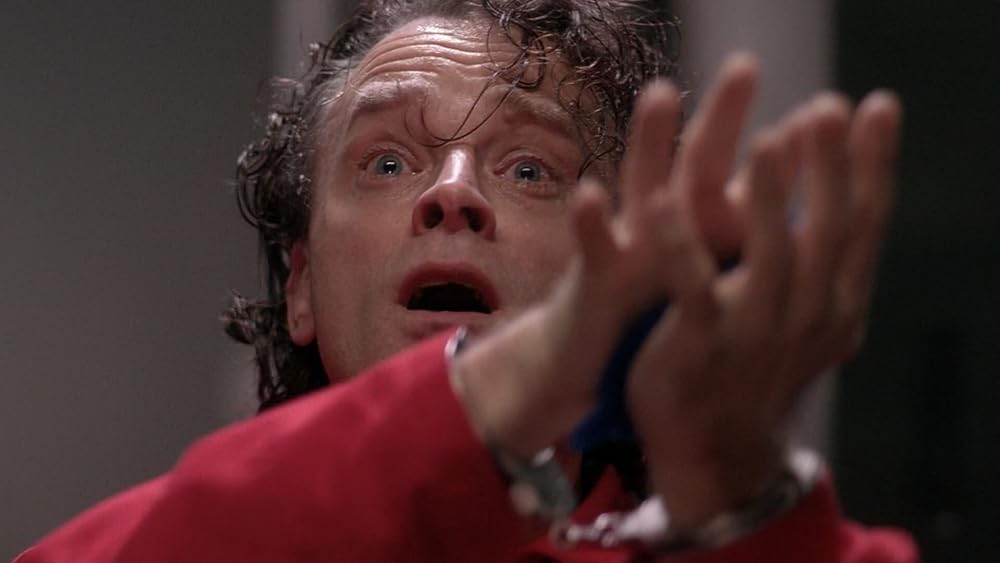
Brad Dourif has been doing movies for nearly 50 years. Now it seems he is walking away from the industry at 74 to enjoy his golden years. Except, there is a caveat.
Recently, digital entertainment publication JoBlo’s Tyler Nichols talked to some of the Chucky television series cast members. During the interview, Dourif made an announcement.
“Dourif said that he’s retired from acting,” says Nichols. “The only reason he came back for the show was because of his daughter Fiona and he considers Chucky creator Don Mancini to be family. But for non-Chucky stuff, he considers himself retired.”
Dourif has voiced the possessed doll since 1988 (minus the 2019 reboot). The original movie “Child’s Play” has become such a cult classic it’s at the top of some people’s best chillers of all time. Chucky himself is ingrained in pop culture history much like Frankenstein or Jason Voorhees.
While Dourif may be known for his famous voiceover, he is also an Oscar-nominated actor for his part in One Flew Over the Cuckoo’s Nest. Another famous horror role is The Gemini Killer in William Peter Blatty’s Exorcist III. And who can forget Betazoid Lon Suder in Star Trek: Voyager?
The good news is that Don Mancini is already pitching a concept for season four of Chucky which might also include a feature-length movie with a series tie-in. So, Although Dourif says he is retiring from the industry, ironically he is Chucky’s friend till the end.
Listen to the 'Eye On Horror Podcast'
Editorial
7 Great ‘Scream’ Fan Films & Shorts Worth a Watch
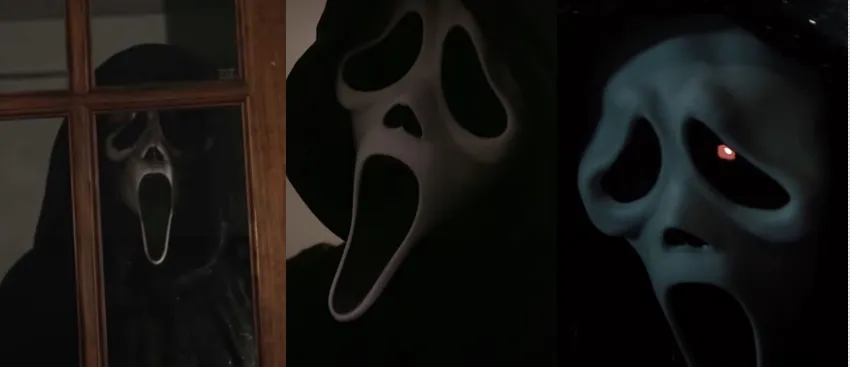
The Scream franchise is such an iconic series, that many budding filmmakers take inspiration from it and make their own sequels or, at least, build upon the original universe created by screenwriter Kevin Williamson. YouTube is the perfect medium to showcase these talents (and budgets) with fan-made homages with their own personal twists.
The great thing about Ghostface is that he can appear anywhere, in any town, he just needs the signature mask, knife, and unhinged motive. Thanks to Fair Use laws it’s possible to expand upon Wes Craven’s creation by simply getting a group of young adults together and killing them off one by one. Oh, and don’t forget the twist. You’ll notice that Roger Jackson’s famous Ghostface voice is uncanny valley, but you get the gist.
We have gathered five fan films/shorts related to Scream that we thought were pretty good. Although they can’t possibly match the beats of a $33 million blockbuster, they get by on what they have. But who needs money? If you’re talented and motivated anything is possible as proven by these filmmakers who are well on their way to the big leagues.
Take a look at the below films and let us know what you think. And while you’re at it, leave these young filmmakers a thumbs up, or leave them a comment to encourage them to create more films. Besides, where else are you going to see Ghostface vs. a Katana all set to a hip-hop soundtrack?
Scream Live (2023)
Ghostface (2021)
Ghost Face (2023)
Don’t Scream (2022)
Scream: A Fan Film (2023)
The Scream (2023)
A Scream Fan Film (2023)
Listen to the 'Eye On Horror Podcast'
Movies
Another Creepy Spider Movie Hits Shudder This Month
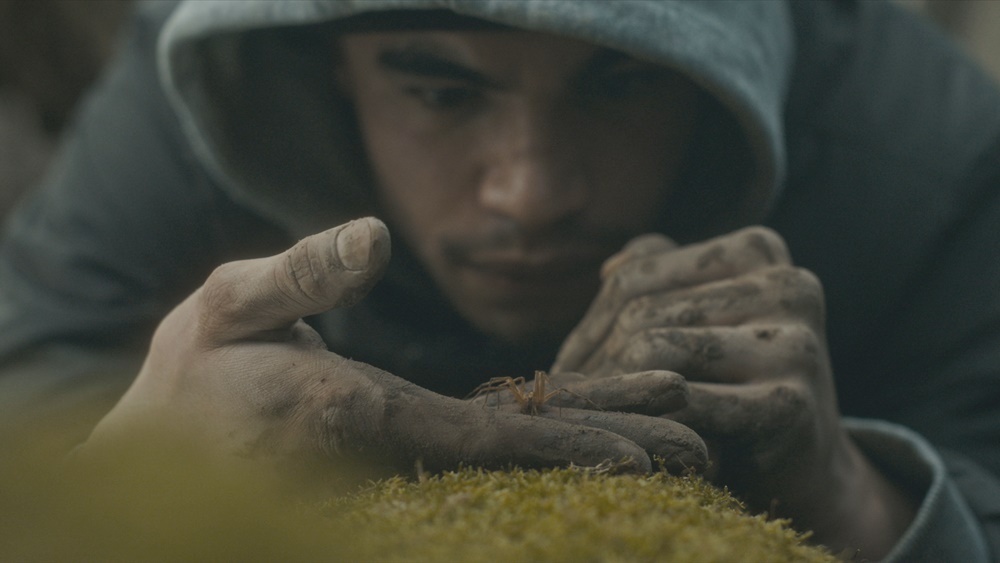
Good spider films are a theme this year. First, we had Sting and then there was Infested. The former is still in theaters and the latter is coming to Shudder starting April 26.
Infested has been getting some good reviews. People are saying that it’s not only a great creature feature but also a social commentary on racism in France.
According to IMDb: Writer/director Sébastien Vanicek was looking for ideas around the discrimination faced by black and Arab-looking people in France, and that led him to spiders, which are rarely welcome in homes; whenever they’re spotted, they’re swatted. As everyone in the story (people and spiders) is treated like vermin by society, the title came to him naturally.
Shudder has become the gold standard for streaming horror content. Since 2016, the service has been offering fans an expansive library of genre movies. in 2017, they began to stream exclusive content.
Since then Shudder has become a powerhouse in the film festival circuit, buying distribution rights to movies, or just producing some of their own. Just like Netflix, they give a film a short theatrical run before adding it to their library exclusively for subscribers.
Late Night With the Devil is a great example. It was released theatrically on March 22 and will begin streaming on the platform starting April 19.
While not getting the same buzz as Late Night, Infested is a festival favorite and many have said if you suffer from arachnophobia, you might want to take heed before watching it.
According to the synopsis, our main character, Kalib is turning 30 and dealing with some family issues. “He’s fighting with his sister over an inheritance and has cut ties with his best friend. Fascinated by exotic animals, he finds a venomous spider in a shop and brings it back to his apartment. It only takes a moment for the spider to escape and reproduce, turning the whole building into a dreadful web trap. The only option for Kaleb and his friends is to find a way out and survive.”
The film will be available to watch on Shudder starting April 26.
Listen to the 'Eye On Horror Podcast'
-
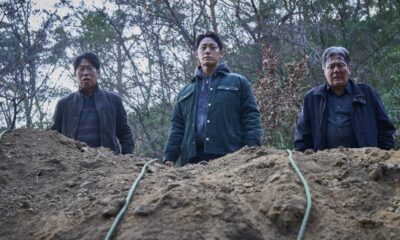
 News3 days ago
News3 days agoThis Horror Film Just Derailed a Record Held by ‘Train to Busan’
-
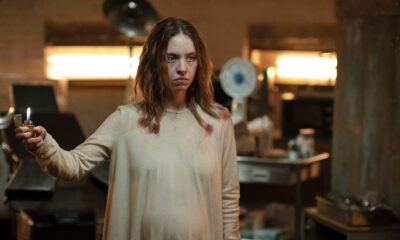
 Movies3 days ago
Movies3 days agoWatch ‘Immaculate’ At Home Right Now
-

 News4 days ago
News4 days agoRead Reviews For ‘Abigail’ The Latest From Radio Silence
-

 News2 days ago
News2 days agoHome Depot’s 12-Foot Skeleton Returns with a New Friend, Plus New Life-Size Prop from Spirit Halloween
-

 News4 days ago
News4 days agoMelissa Barrera Says Her ‘Scream’ Contract Never Included a Third Movie
-
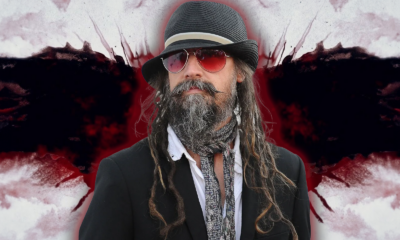
 Editorial5 days ago
Editorial5 days agoRob Zombie’s Directorial Debut Was Almost ‘The Crow 3’
-

 News3 days ago
News3 days agoA24 Joins Blockbuster Movie Club With Their Biggest Opening Ever
-

 News1 day ago
News1 day agoWoman Brings Corpse Into Bank To Sign Loan Papers
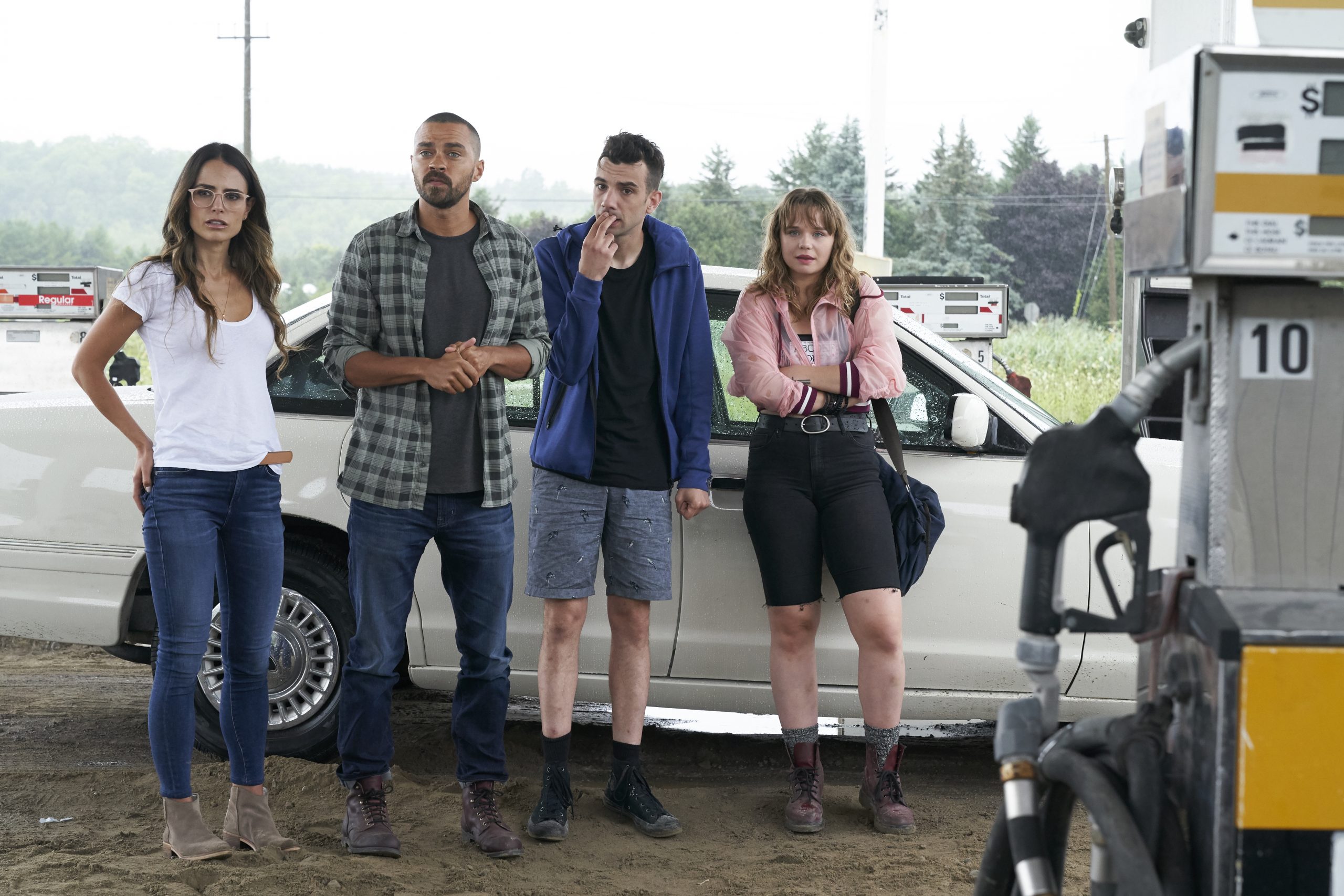
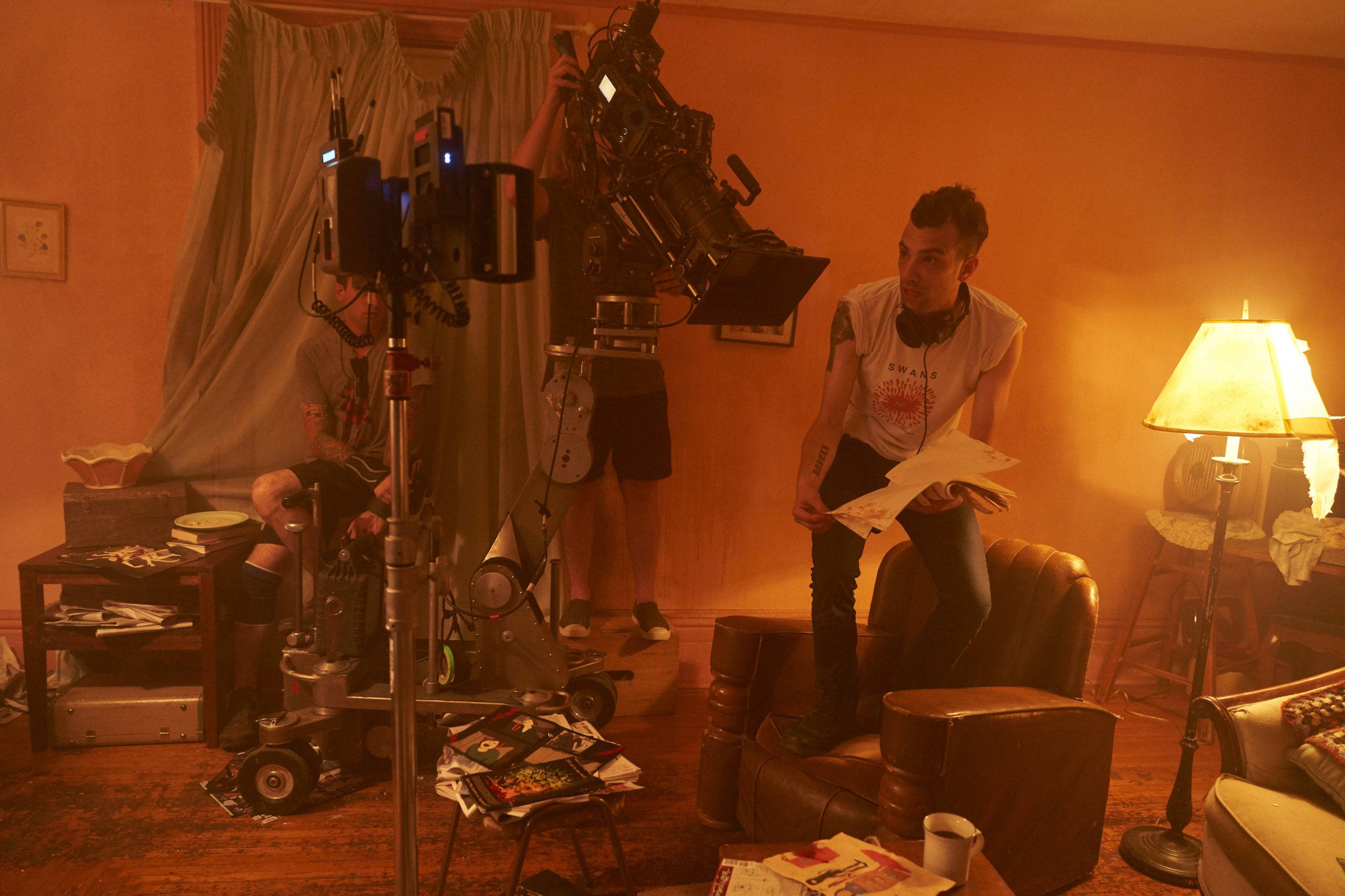
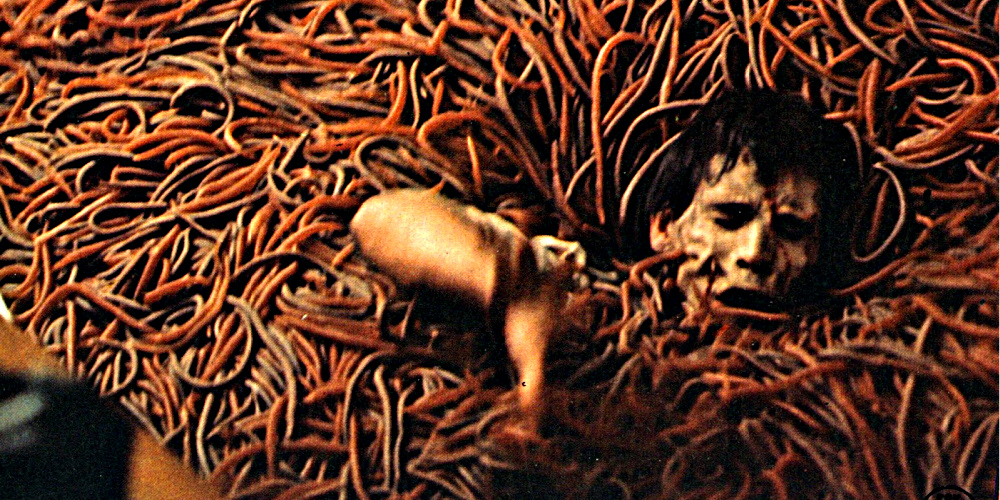























You must be logged in to post a comment Login